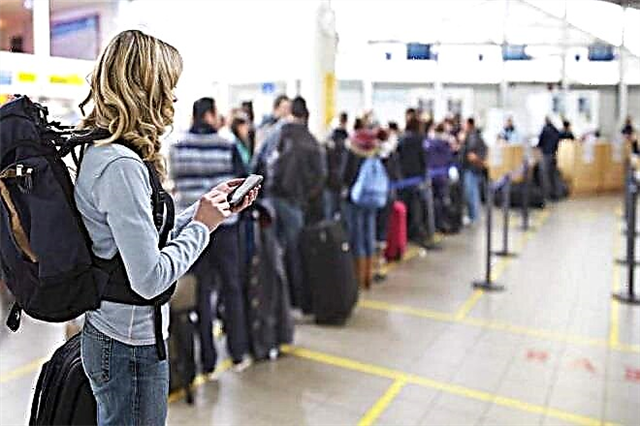Several years ago, the cost of buying and renting a home in Berlin was lower than the German average. However, today there is a shortage of rental housing in the capital, which is why rental rates have grown significantly and exceeded the national average.

What factors affect the rental price
The main factors affecting prices are the location of the property, the year it was built and the quality of the building. Even in the center of Berlin, in a seemingly popular area, there are places that tenants, for various reasons, try to avoid, so the location of the property relative to the center does not always play a decisive role.
By the way, Mitte is not only the “heart” of the capital, but also the most diverse area of the city, and you need to be careful when choosing housing here.
The most prestigious parts of Mitte are Unter den Linden, Friedrichstrasse and Karl Liebknecht streets, fans of small boutiques and galleries will love the Oranienburger Strasse. But the dull panel arrays of the Honecker era, located in the Alexanderplatz area, please not everyone.
If we talk about the years of construction, the most expensive will be new buildings. For old pre-war renovated buildings, lower prices are set. Comparatively new buildings of 1980-90 are even cheaper. Finally, the most inexpensive houses are 1960-70s, provided that they are not located in prestigious areas - then the demand and price will be high.
The following map will help you get an idea of prices for rental housing in different areas of Berlin.
 Experts also note the acute problem of a shortage of land plots for the construction of residential complexes. The cost of land has increased several times over several years. At the same time, the growth of the population and the influx of refugees leads to a shortage of economy-class housing, and it is impossible to build residential properties of a low price segment on expensive plots. As a result, the Berlin authorities allocate abandoned clinic buildings for these purposes, which are being reconstructed or used as a fuel storage.
Experts also note the acute problem of a shortage of land plots for the construction of residential complexes. The cost of land has increased several times over several years. At the same time, the growth of the population and the influx of refugees leads to a shortage of economy-class housing, and it is impossible to build residential properties of a low price segment on expensive plots. As a result, the Berlin authorities allocate abandoned clinic buildings for these purposes, which are being reconstructed or used as a fuel storage.
Demand for rented housing, lease terms
In general, rental housing in Berlin is extremely popular among all segments of the population. Apartments and houses are rented not only by foreigners and immigrants from other cities of Germany, but also by Berliners. According to statistics, approximately 80% of the city's residents do not have their own house or apartment, as a result of which they live in rented living space. And this applies not only to the low-income population - wealthy citizens are also in no hurry to buy real estate, preferring to rent housing on a long-term basis.
Of course, well-to-do Berliners choose high-quality living space in prestigious areas as well. So, elite real estate goes mainly to government officials, businessmen, lawyers and doctors.
Lease agreements are predominantly entered into for an unlimited period with the right to terminate the agreement by both parties, subject to the terms established by law (this is a standard lease). The term for termination of the agreement is, as a rule, 3 months. Apartments and even more so houses are rarely rented for a month. In addition, it is much easier to conclude a long-term lease agreement, despite the fact that there are fewer requirements for tenants looking for housing for a short time.
At what price are apartments and houses for rent in Berlin
 In 2021, the average rental rate in Berlin for apartments is 8.20 € / m2. The average rental price for an apartment of about 30 m2 is 14.05 euros / m2 (in Germany - 11.02 euros / m2). Apartments with an area of about 60 m2 can be rented at a price of 11.31 euros / m2 (in Germany - 7.61 euros / m2). Spacious apartments with an area of about 100 m2 will cost tenants 12.55 euros / m2 (in Germany - 9.02 euros / m2). It turns out that the cost of renting an apartment in Berlin exceeds the average for Germany by about 27%. If you rent an apartment in Berlin for daily rent, the cost will be up to one and a half times higher.
In 2021, the average rental rate in Berlin for apartments is 8.20 € / m2. The average rental price for an apartment of about 30 m2 is 14.05 euros / m2 (in Germany - 11.02 euros / m2). Apartments with an area of about 60 m2 can be rented at a price of 11.31 euros / m2 (in Germany - 7.61 euros / m2). Spacious apartments with an area of about 100 m2 will cost tenants 12.55 euros / m2 (in Germany - 9.02 euros / m2). It turns out that the cost of renting an apartment in Berlin exceeds the average for Germany by about 27%. If you rent an apartment in Berlin for daily rent, the cost will be up to one and a half times higher.
As for houses, the average rental price is 13.03 € / m2 (in Germany - 8.79 € / m2) when it comes to an area of 30 m2. A house with an area of 150 m2 can be rented at a price of 12.20 m2 per 1 m2 of living space (in Germany - 9.23 euros / m2). A spacious private house will cost 11.93 euros per 1 m2 of area (in Germany - 9.51 euros / m2). The cost of renting individual houses in Berlin is about 26% higher than the average for the Federal Republic of Germany.
You should also take into account such an item of expenses as a deposit for a rented apartment in the size of 2-3 monthly payments.
It is better to transfer the funds to a special savings account in the bank, and give the savings book to the owner of the apartment. So the landlord will not be able to withdraw money and then not return the full amount, and the tenant will not be able to dispose of the money without a book.
In 80% of cases, housing is rented unfurnished. It even happens that the previous owners will have to buy back the kitchen. If it is not there, you will have to spend at least 2,000 euros to purchase a new one - when you leave the apartment, you can either sell it to the next tenants, or take it with you.
If a rental property was found through an agency, you will also have to include in the list of expenses the commission to the intermediary - usually 25% of the monthly rental cost. In this regard, renting an apartment in Berlin for a long time from the owner is cheaper, but most owners of residential premises prefer to use the services of agencies.
Prospects for the development of districts of Berlin
 Berlin is currently home to 3.67 million people and the population continues to grow. Accordingly, the demand for housing is also increasing, which is why the supply of real estate is becoming increasingly scarce. Today, the share of vacant residential premises is slightly less than 2%, which in no way meets the existing demand.
Berlin is currently home to 3.67 million people and the population continues to grow. Accordingly, the demand for housing is also increasing, which is why the supply of real estate is becoming increasingly scarce. Today, the share of vacant residential premises is slightly less than 2%, which in no way meets the existing demand.
That is why the city needs new construction projects so badly. The Berlin authorities, aware of this problem, have set themselves the goal of putting into operation about 10,000 new apartments annually (and according to the Statistical Office Berlin-Brandenburg, almost 50,000 people move to the capital of Germany every year). The plan is being consistently implemented, with 12,000 apartments being completed in 2021, for example.
A positive aspect of this development is that tenants' demands are not focused on just a few areas of the city - it is well known that residential areas of Berlin can develop quite quickly, become fashionable and quickly gain popularity.
As a result, new construction projects are distributed relatively evenly across all parts of the city. In Mitte, for example, as part of The Mile! 270 condominiums are under construction, equipped with high-end amenities, and another 148 condominiums ranging from 50 to 130 m2 are being built in 6 large townhouses "Flottwell Living". In Köpenick, a project called 12Brüder was recently launched, bringing 12 new single-family homes to the market in 2021.
It takes a long time to look for suitable rental housing. It is difficult to predict the prices - they are set depending on the location and condition of the apartment or house.
In addition, in recent years the rental value has increased for all types of housing of any size. And if purchase prices are not much higher than average prices in Germany, then rental prices are much higher.It even happens that rental rates in previously unclaimed areas turn out to be higher than those set in the center.
Yet real estate in the eastern districts is cheaper than in the western part of Berlin - at least in terms of rental housing. For example, a tenant will have to pay about 570 euros per month for a room of 50 m2 in the western district of Spandau (hot lease), and a similar rented apartment in the eastern district of Marzahn will cost 450 euros per month. An even more noticeable difference is observed in terms of rental rates for houses.
 An increase in the cost of renting apartments and houses is also planned largely because over the past few years Berlin has become the largest “media hub” attractive due to its comfortable and safe living conditions. New growth prospects are also opening up the development of knowledge-intensive and high-tech industries, the financial sector and cultural space.
An increase in the cost of renting apartments and houses is also planned largely because over the past few years Berlin has become the largest “media hub” attractive due to its comfortable and safe living conditions. New growth prospects are also opening up the development of knowledge-intensive and high-tech industries, the financial sector and cultural space.
The greatest demand is observed for apartments with an area of less than 120 m2 - they account for about 60% of all transactions in the rental housing market. Since Berlin regularly receives new residents from other countries under the program of distribution of migrants and refugees, it is also predicted that demand will continue to grow and, accordingly, rental prices in the lower price segment.
Prices for renting apartments of various sizes in Berlin
The high demand for rented housing in Berlin is evidenced by statistics - from the date of publication of the announcement of the renting of an apartment to the signing of an agreement with the tenant, an average of 10 days pass. That is why interested parties should respond to the proposals of the landlords immediately - otherwise, the housing will go to someone else.
Here is a table that will help you get an idea of the price at which you can rent an apartment in Berlin in 2021, and what is the cost of rented housing in the capital of Germany in comparison with the average prices in the federal state of Berlin and in Germany as a whole. The graph shows the change in the cost of rented apartments for the period from 2021 to 2021.

In the table below, you will find information on the average cost of renting apartments in different districts of Berlin:
On average, Berliners spend 20.7% of their monthly income on renting an apartment (the average salary in Berlin after taxes is 2,050.44 euros), if you do not take into account the cost of utilities. The cost of electricity, heating, air conditioning, hot / cold water and household waste disposal will be about 231.51 euros.
Take a sociological survey!
[yop_poll id = ”14 ″]
What is the Difference Between Hot and Cold Rentals
Before considering the offers of landlords for renting housing in Berlin, you should understand the concept of "cold" and "hot" rent, since these terms will be found in every ad:
- Cold rent (Kaltmiete) is a rent that does not include utility costs (Nebenkosten). From the rent received from the tenant, the owner of the property pays for utilities by transferring part of the money to the account of the house management (Hausverwaltung). In addition, you will need to take into account the monthly contributions to the municipal treasury (Instandhaltungsrucklage) - an average of about 50 euros per month (the exact amount of the contribution will depend on the area). Thus, the cold lease is of interest to the landlord, since this is the amount of money that will remain in his hands after incurring the cost of maintaining the housing.
- Hot rent (Warmmiete) includes the amount of cold rent and the cost of utilities, that is, it is the total amount of rent that the tenant must transfer to the owner of the living space. The indicator is of interest to the tenant, since this is the amount that he will pay monthly to the owner of the premises.
The first amount indicated in all ads is the “cold lease”. To find out how much you will have to pay in the end, you need to add the cost of utilities.
Pay attention to the fact that often an apartment with a higher “cold rent” ends up costing less due to the low cost of utilities.
To save on electricity bills, you need to look at the energy efficiency certificate. Electricity is not included in the “warm rent”, it is paid separately. The tenant must contact the service provider himself and enter into a contract with him. In addition, the additional cost does not include payments for using landline telephones and the Internet.
 You need to be prepared for the fact that the cost of utilities is indicated in the ad “on average” (this is also called a prepayment for utilities in the amount of 50-250 euros), so at the end of the year, the owner of the apartment will probably have to pay extra. But if the tenant spends less than the planned amount, then part of the money is returned back to the account. “Standard” is an account for 50-70 euros.
You need to be prepared for the fact that the cost of utilities is indicated in the ad “on average” (this is also called a prepayment for utilities in the amount of 50-250 euros), so at the end of the year, the owner of the apartment will probably have to pay extra. But if the tenant spends less than the planned amount, then part of the money is returned back to the account. “Standard” is an account for 50-70 euros.
The presented map with information relevant for 2021 (it shows the cost of “cold rent” for a 2-room apartment with an area of 70 m2) will help you to ask the price of rented residential properties located in different districts of Berlin.
The current rental value for the district and even for a specific street can be found on the official website of Berlin, where the service for finding prices for rental housing is freely available.
Prices for renting private houses in Berlin
The first table that you see below contains information about the rental prices for private houses of 100 m2, 150 m2 and 200 m2 in Berlin, Berlin and Germany.
The second table shows the dynamics of prices for rented residential buildings for the period from 2021 to 2021:

The table below provides information on the average cost of renting individual houses by districts of Berlin:

Conclusion
Despite the attempts of the Berlin authorities to satisfy the demand for housing, renting an apartment or house in the capital of Germany is becoming more and more difficult every year - the search for options can take months. At the moment, "the number of applicants for viewing one object after the publication of the announcement" is 33 people. This becomes a real problem, since the last thing owners of real estate seek to conclude a lease agreement with foreigners. Therefore, when it comes to renting a room for a week for the sake of a tourist trip, it is not advisable to look through rental advertisements - this is too long and labor-intensive.
However, you should not use the first opportunity to move into an apartment without checking the information about the area of its location - we talked in detail about the troubles that may arise after the wrong choice in the article.
You should also assess the cost of utilities and check if the area where the housing is located in the district, which is experiencing a rapid increase in prices for rented apartments. Finally, you need to carefully check the lease and manage your money wisely - never agree to a prepayment before you see the property with your own eyes. By the way, concluding a contract without intermediaries helps to save about 25% of the monthly fee, but it involves a lot of risks - due to the excitement for rental housing in Berlin, many scammers have appeared.











